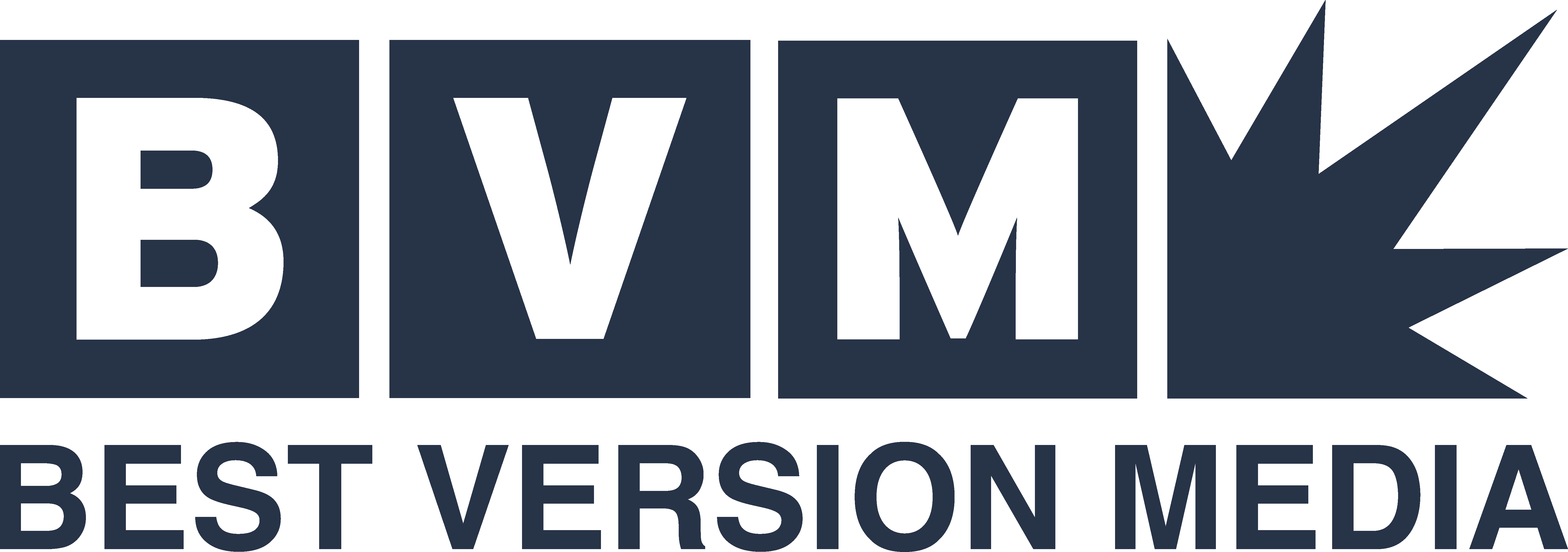
Top 11 Features Every Local Business Website Needs to Convert Visitors
Establishing an online presence is essential for any local business, and your website is among the most powerful tools to do so. Anyone can create a website, but a poorly designed one can severely limit its effectiveness in attracting visitors and turning them into paying customers.
Sweor found that 88% of website users won’t revisit if they have a bad experience. This highlights the importance of creating a well-designed site because without it, you risk missing out on potential customers.
Beyond building an attractive website, the ultimate goal is to increase sales. Several factors influence a site’s conversion rate, all of which contribute to the overall user experience. With that in mind, here are 11 features that every local business website should include to maximize conversions.
Clear Objective
Every local business should have a defined purpose for its website before beginning the design process. Do you want to appear formal, or would you benefit from a more creative approach? Are you targeting a younger or older audience? Is your goal to increase online sales or to inform visitors about your services?
Answering these questions helps guide your website’s design and messaging to reflect your business goals. This starts with the first place most visitors will land, and that’s your homepage.
Your homepage should clearly communicate the purpose of your site. This can be achieved through a short introduction, visual elements, or a prominent slogan that appears near the top of the page. If users don’t understand how your business can help them within a few seconds, they may leave.
Forbes Advisor reports that 61% of online users will leave a website and find another if they don’t find what they are looking for within five seconds of landing on a site. This shows how essential it is to put your best foot forward at the top of your homepage.
Once you’ve narrowed down the objective for your site, it should remain the same throughout the rest of your landing pages. From design and layout to overall messaging, your site should convey your objective for the entirety of a user’s experience.
Clean Web Address
A basic web address can be more impactful than you may think. A simple address is easier to remember, which is especially important when online users are constantly bombarded with advertisements that could cloud their memory. It also makes finding your website easier, as it’s less likely to be lost in translation via word-of-mouth and reduces the likelihood of typos.
Additionally, it’s a chance to strengthen your brand identity. A domain name that directly or closely resembles your business’s name reinforces your brand and can positively impact local SEO, which improves your ability to be found in online search engines.
To create an effective yet clean address, keep it short and to the point. Avoid using hyphens and numbers that can confuse, and try to avoid slang that may not be understood by a wide audience. If possible, use one of the more commonly used extensions, such as .com and .net, as others can be more difficult to remember.
Impactful Branding
Your brand identity should reflect your mission and be evident throughout your website. Several factors impact your brand identity, with one of the most prominent being your logo. It’s the visual that is associated with your brand and should align with your business’s objectives.
Your logo should have a color scheme, typography, and imagery that is consistent with the rest of your site. If you’re aiming to appear professional, creative, informative, or goofy across your website, your logo should support that goal.
Another crucial aspect of building a memorable brand is establishing your brand messaging. What tone do you want to use? Does your objective align with your slogan or tagline? Does your value proposition inform visitors about why they should choose you over your competitors? The answers to these questions should shape the way you want to be viewed in your community and remain consistent throughout your website and all of your marketing campaigns.
Even after you’ve established your brand identity, there will be opportunities to evolve with the industry. Market trends, technological advancements, and customer preferences are ever-changing, and staying up to date is vital to remaining relevant. Collecting and analyzing feedback from customers can help avoid stagnancy and create a deeper connection with your customer demographic.
Simple Navigation
Once you’ve successfully attracted users to your website and have created intrigue through your branding, the next step is to influence them to browse the rest of your site. This is achieved through an easy-to-use navigation menu, which is often overlooked by amateur web designers.
CXL found that a website visitor spends an average of 6.44 seconds on the navigation menu. That’s a significant amount of time, meaning it’s essential to have a well-designed menu that quickly directs users to the pages they’re searching for.
To achieve this, design your menu with a logical structure:
- Group similar pages together.
- Keep it in the same place on every page.
- Don’t overload it with too many options.
- Use clear, descriptive labels.
Other elements to keep in mind include descriptive labels that indicate the information each page will display, visual cues that improve intuitiveness, and a search bar if your website is loaded with content. Ensure the experience is seamless on both desktop and mobile devices.
Even if you believe you’ve created the perfect navigation menu, conduct testing and receive feedback from trusted family and friends. You may discover simple improvements that enhance usability.
Easily Located Contact Information
This may seem obvious, but your contact details should be the most easily accessible information on your website. It should be displayed prominently in the header or footer of every landing page, in the same location. Additionally, a page dedicated to your contact information should be included, listing all available methods, such as your phone number, email address, and contact form.
Offering multiple contact options is essential, as it accommodates every user’s preferences. Many people prefer a phone call for immediate communication, while others prefer an email that they can respond to on their schedule. A contact form is often the easiest method, as the visitor can remain on your website and avoid opening their email client.
Placement is key, but which information you choose to include is just as important. For example, local businesses should always include their physical address when applicable, as it can build trust and legitimacy. Including a map is another great way to create a connection with the user, as they may recognize businesses near you or frequently used routes that are near your location.
If your contact information changes, be sure to update it as soon as possible. Outdated information can damage credibility and cause you to lose interested customers.
Powerful Calls to Action
Your efforts to attract users to your site could go to waste if you have ineffective calls to action (CTAs). CTAs guide visitors towards a desired action, such as contacting a business, subscribing to an email newsletter, or making a purchase.
Though they provide a clear and positive impact, many local businesses neglect CTAs. Launch North reported that 70% of small business websites don’t use CTAs. Using them on your website is crucial for staying ahead of your competitors.
To create effective CTAs, use direct language that doesn’t allow for misunderstandings. Phrases like “Contact Us” and “Buy Now” are straight to the point, leaving no ambiguity as to the request. Using contrasting colors and increasing the font size are great ways to attract attention to your CTAs.
They can also be used to increase urgency with phrases such as “Sale Ends Soon” or “Limited Time Offer”, or to underscore the value, such as “Get Your Free Quote” or “Start Your Free Trial.”
As with all elements of your website, test different placements and styles of displaying your CTAs. You may find some methods are more effective than others, and that can change over time.
Optimized Mobile Experience
Relying on a website built solely for desktop use is no longer an option. According to GlobalStats, ~64% of all internet traffic in May 2025 came from mobile devices, while ~36% came from desktops.
Beyond just the traffic advantages of mobile, Nielsen Norman Group found that visitors are 67% more likely to purchase from a mobile-friendly website. This highlights just how important it is to provide an optimized mobile experience to increase conversion rates.
To achieve this, several key components require attention. Speed and performance are among the most crucial, as mobile users tend to have less patience than those on desktops. Compress images to fit different screen sizes and use cookies to improve load times for repeat visitors.
The design of your site should also adapt for mobile use. While your brand identity should remain consistent, the layout may need to be adjusted to accommodate smaller screens, and the navigation menu may require revision. A hamburger menu (often three lines) is a great way to maximize space and still provide a convenient method to navigate your website.
Finally, ensure your contact information is easily accessible. This includes hyperlinks on your phone number and email address that prompt the user to either call or send a message immediately. If you have a contact form that asks for the visitor’s email address or phone number, provide alternative keyboards that make the information easier to submit.
Captivating Content
A well-designed website can prove ineffective without compelling content to fill it. High-quality content can establish your knowledge of the industry and influence visitors to convert to customers based on your expertise.
Content should be easy to understand and tailored towards your audience. Clear and concise writing is always preferred, and it’s best when it tells a story or contains interactive elements like polls or infographics.
It’s also an opportunity to optimize your local SEO by adding keywords that relate to your business. If you’re unsure what keywords would work best for you, conduct research using analytical tools or study where your competitors rank when using search engines for common phrases. Be sure to avoid keyword stuffing, as it can harm your SEO.
Content doesn’t need to be limited to text. Images and videos are a great way to create a connection with your audience. Photos of your storefront and employees can build trust and credibility within your community without requiring significant time to produce.
Authentic Reviews
Consumers are far more likely to purchase from a business that has built credibility through reviews and testimonials. Northwestern University’s Spiegel Research Center revealed that websites that display reviews can see a 270% increase in conversion rate.
That’s because reviews, both positive and negative, build credibility and authenticity. Positive reviews are always preferred, but negative ones provide the chance to show you care by acknowledging and remedying the issue.
However, just collecting reviews isn’t enough. Strategically placing the reviews throughout your website can be the difference between a potential customer making a purchase or leaving for a competitor whom they trust more.
Your best reviews should show prominently on your homepage to establish immediate credibility. More specific reviews can be dispersed on individual product or service pages. If you’ve received a high volume of positive reviews, consider a dedicated page for testimonials.
Emphasized Customer Support
Selling your products and services to website visitors is the primary goal, but the interaction with the customer often doesn’t end there. Providing exceptional customer support can significantly boost sales and build customer loyalty, which can create a fan for life.
Hubspot research found that 93% of customers are more likely to make another purchase from a company they’ve previously visited if they offer excellent customer service. The importance of customer support cannot be overstated, and there are several ways to enhance it for your local business.
Just like negative reviews, be sure to respond promptly to requests and never leave one unaddressed. Try your best to resolve issues upon first request and offer several ways to initiate a customer support request. If you have the time and resources, become proactive instead of reactive when addressing issues. A customer support team is a great way to do so; however, it’s not necessary.
Consistently monitoring inquiries and resolving issues can positively influence brand perception and lead to long-term loyalty that results in sustainable growth. It can also lead to increased word-of-mouth marketing, which ultimately increases your conversion rate.
Frequent Updates
By now, you’ve taken many steps to improve your local business’s conversion rate. Don’t let your efforts go to waste, and be sure to regularly update your site.
If your business address or contact information changes, update it immediately across all platforms. If some time has passed since you last updated your reviews or testimonials, consider adding more recent ones.
Keeping up with your website will ensure you don’t fall behind and have to start the process all over again. It also improves your local SEO, so be sure to set a schedule to frequently review and make changes as they become necessary.
How Best Version Media Can Help
Your website is the face of your business, but it’s only part of your online presence. Best Version Media can help your local business through a variety of services, including listings and reviews management across multiple search engines and directories.
BVM offers the ability to bundle geo-targeted display and social media ad campaigns to get the most out of your marketing budget and reach your preferred audience, all from one simple dashboard.
Get in touch with BVM to get started on your journey to an improved online presence.






